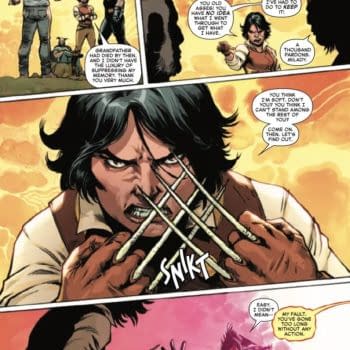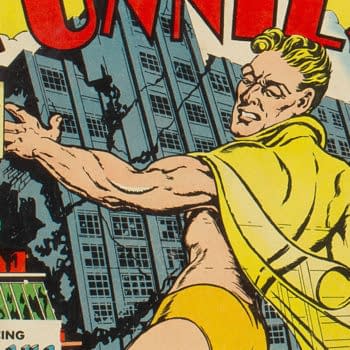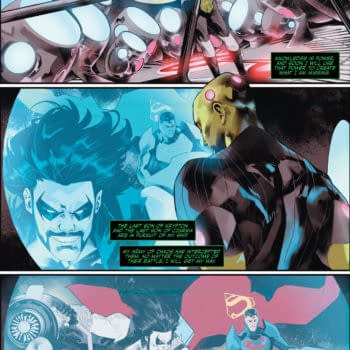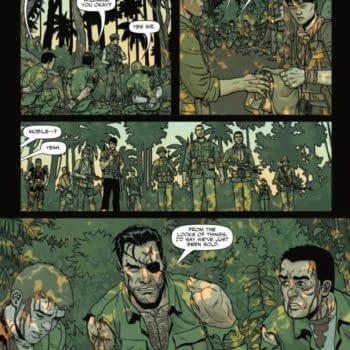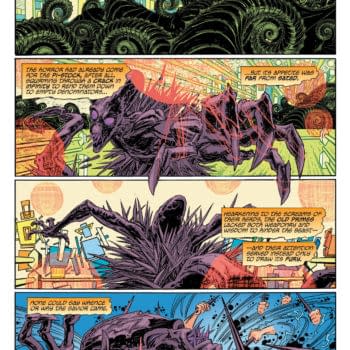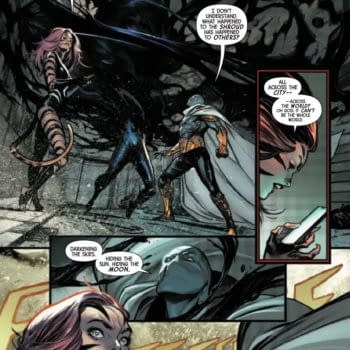Posted in: Comics, Recent Updates | Tagged: Andrew Aydin, civil rights, congressman john lewis, graphic novels, March: Book Two, Nate Powell, non-fiction, Top Shelf Productions
'Rare And Life-Changing' – Nate Powell On Bringing March: Book Two To Life(UPDATE)
By Cameron Hatheway

This month saw the release of March: Book Two by Rep. John Lewis, Andrew Aydin and Nate Powell from Top Shelf Productions. Spanning through the tumultuous years of 1961-1963 with the Freedom Riders, jail time, and the March on Washington, the creative team continues with delivering another powerful read, much like the first book. Powell, the artist for the graphic novels, was kind enough to answer some of my questions in an email interview.
Cameron Hatheway: Your illustrations of 1960s America really come to life, capturing the tone of the time perfectly. What kind of research went in to some of the iconic settings? Did you travel a lot to make sure they were as accurate as possible, or did Rep. Lewis' personal photographs and Google Images really help you out?
Nate Powell: All of the above. Congressman Lewis and Andrew both kept me well-stocked with reference accompanying the script, and I usually do at least an hour of my own research and reference each day too. During the editing phase, Leigh Walton showed incredible dedication, unearthing additional treasure troves of documents and reference. The more deeply we felt, the deeper we dove. On top of all that, I'm a native Southerner; I grew up in Arkansas, Alabama, and Mississippi, and my parents are Baby Boomer Mississippians. Many of the locations in March are sites I've already seen with my own eyes, and most of the environmental reference is directly from my own memories and photographs. I spent elementary school in Montgomery, and immediately upon finishing Book One I participated in a pilgrimage to civil rights landmarks throughout Alabama, which was a profoundly impactful journey.
CH: Some of the scenes in Book Two are incredibly intense in tone. Which panel or page in particular was difficult to draw than the others?
NP: I preface this answer by stating clearly that my experiences drawing these events are absolutely nothing in contrast to those who lived and died through them. The most disturbing to depict was definitely the little white boy in the Montgomery bus station massacre, whose parents were encouraging him to claw at the face and eyes of an unconscious Jim Zwerg. A lot of it got under my skin as a dad, at the absolute trust children have for the world their parents present to them—but then I realized this kid is probably still alive as a 60-year old, and if so, how much does he remember of that moment? How did he turn out? What does he think of his parents raising him as a default white supremacist? Does he think about it at all? That scene screwed me up for days.
I also had to depict John Seigenthaler getting knocked unconscious with a lead pipe, coincidentally on the same day he passed away. That was unreal. The Birmingham Children's Crusade was a very intense task. George Wallace's inaugural speech too, though it's visually fairly unremarkable—I met him in 1984 as a six-year-old, and my parents vaguely explained his coming-around-to-the-side-of-the-people to me, but it really didn't 110% sink in with me until I had to letter his speech here, delivered just a decade before an attempted assassination changed his life, and another decade before we'd meet.

NP: Well, in a lot of ways I try to cloud that tendency whenever possible, though I know another intention-indicator I use is the obscuring of certain characters' eyes as they speak, either behind glasses, lettering, or light.
One of the most important themes in March is conveying that the worst of humans aren't monsters—they're people exhibiting the absolute worst of humanity. Klansmen aren't literal monsters; it's so much more disturbing that they are your neighbor, your uncle, that they could be you or me in the shittiest alternate timeline. I definitely use a lot of expressionist linework to convey the dark spell of mob mentality, the psychosis, power, and hatred, but I also try to make those same attackers quickly snap back into their roles as each other's neighbors for maximum effect. I think that is most evident at the end of the Montgomery bus station scene when the gunshot momentarily pulls a murderous mob out of their bloodlust. They disperse, leaving us to explore whether or not any of them reflected upon their dark spell.
CH: Some of your word balloons are indecipherable, like in the mob scenes. Is this intentional?
NP: Definitely—this is something I've been incorporating since Swallow Me Whole. Generally it's a simple means by which to activate both the process of reading and the sensory saturation of the work. We all accept the visual shorthand of having far-away objects harder to see, using thin, scribbly lines and diminished detail—my use of lettering helps apply an auditory dimension to our reading processes. I started thinking about this while reading Chris Claremont X-Men comics back in 1990 when overlapping, conflicting word balloons were used to indicate telepathic oversaturation. Also, not everything needs to be readable. I personally add/fill-in the vast majority of random crowd captions in March; not only do I not want to put words in Congressman Lewis' mouth, or in his personal account, I also throw in a lot of scribbled, illegible hate-speech. I figure, we can see that it's there—does it really need to be so clearly readable all the time, especially if I'm the one filling it in there? We get it.

NP: Working together has been incredible—he's the genuine article in every sense of the word. As for the process of collaboration, the Congressman and Andrew work together every day in the office, but we are governed by strict Congressional ethics rules and have to save any March-y work for evenings, weekends, or more likely the multitude of book-related events we do while touring together. Those windows allow me to get face-to-face feedback and clarification; at other times I simply ask Andrew and he runs it by Congressman Lewis. John has a near-photographic memory, and he and I recall things in a very similar process, with similar vividness– so in that respect I feel our brains are very compatible for this project.
CH: If you could illustrate another biography of a politician, dead or alive, who would it be and why?
NP: I was trying to find the most fitting answer, but truthfully I have no interest in drawing any biographies of political figures, period. I see and know Congressman Lewis through the lens of being a revolutionary moral force, a civil and human rights icon, an immensely interesting and inspiring man—and I honestly have to remind myself occasionally that he's a sitting Congressman. At my core, my primary interest remains as a graphic novelist who writes and draws my own stories. March is a rare and life-changing exception.
CH: What's next for you now that you've helped make history with Rep. Lewis and Aydin?
NP: Well, we're only halfway done with the March saga—there's one more book in the trilogy, and an essential fourth volume (1966-1968) after that. In the meantime, however, Top Shelf is releasing You Don't Say this May, which collects a bunch of my shorter comics from 2004-2013; many of those are unpublished, rare, or previously unavailable in English. I'll also be drawing a Dark Horse series called Two Dead with writer Van Jensen—we'll probably have something to announce or share about that later this year. Once the March saga is complete, I'll jump right back into my next solo graphic novel, Cover, which Top Shelf will be releasing in 2018. I also have some big secret stuff brewing, but those cats ain't outta the bag yet.
March: Book Two is available now from Top Shelf Productions. Special thanks to Powell for taking time out of his busy schedule and Leigh Walton for helping put this together.
March: Book Two (Top Shelf Productions)
Written by Congressman John Lewis & Andrew Aydin
Illustrated by Nate Powell
192 Pages, B&W
$19.95
Cameron Hatheway is a reviewer and the host of Cammy's Comic Corner, an audio podcast. You can shout indecipherable word balloons at him on Twitter @CamComicCorner.










